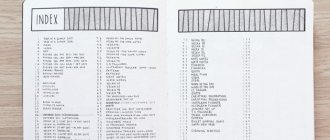“From Monday I will start a new life, I will go to the gym, do yoga, do self-massage, pump up my abs...” - each of us periodically sets some goals for ourselves and does not achieve them, postpones them to the next month, several months, a year .
Isn’t it because this happens because we want a lot at once and plans fall on us like a heavy burden, preventing us from doing even the smallest thing in the end. Sometimes we zealously begin to carry out our plans, but after working out, for example, 3 times a week in the gym for several hours, we give up classes for a long time. Why is this happening? Because the load is heavy, because it gets boring, and the habit has not yet been developed.
What is the 1 Minute Rule?
The rule concerns the recording of driving time by a tachograph. The tachograph that was produced between 2006 and 2011, or the first generation tachograph, recorded every minute as driving time if there were at least 5 seconds of driving time in that minute . Also, a minute was recorded as riding time even if after a minute of riding time the entire subsequent minute was rest time (or some other activity), but that minute of rest time was followed by a minute that was recorded as riding time (see Example 1). For example, when driving in traffic jams or with traffic lights, our drivers noticed this most often. Minutes of driving time were added from nowhere!
Example 1: Real action (red line - driving time with speed graph).
The first generation digital tachograph records actions accordingly:
The example given explains that the older generation digital tachograph recorded 70 seconds of actual driving as a full four minutes of driving time!
Second-generation tachographs manufactured from October 2011 have the following setting: the most continuous continuous action that lasted the longest during that minute is recorded as the action for that entire minute. The rule applies separately for each minute. After a minute has elapsed (digital tachograph clock), the tachograph analyzes the completed minute. Finds the longest continuous action there and names it for a whole minute by this action. For example, if there were 31 seconds of continuous rest time in a minute and the rest of the time was driving time, then the longest lasting activity was the rest time, hence the tachograph would record that entire minute as rest time.
Example 2: A second generation digital tachograph with the 1 Minute Rule records actions accordingly:
Based on the examples presented, the same situation with different tachographs created 3-minute difference.
The change in setting provided the opportunity to leave the driver more driving time per day, week, cumulative accounting for two weeks, per month, year... In the end the numbers are large, and since time and kilometers are the most important thing in this world, this change had a positive impact overall to transport companies.
Where is the way out?
The Japanese philosophy of Kaizen, which literally means “continuous improvement” in Japanese, can come to the rescue. The word itself is translated as follows: “kai” means change, and “zen” means wisdom. That is, it is assumed that these should be changes in life, but not spontaneous, but wise, caused by long reflection or rich life experience.
For the most part, this philosophy, or practice, initially focused more on improving production processes or supporting processes in business and its management. If it was necessary to optimize production, the entire staff was replaced - from a simple worker to the general manager or even the plant director.
In business, such continuous improvement can affect not only the production itself, but even the management of the enterprise. The goal of kaizen practice is to improve production by changing standards so that there is no waste. In Japan itself, this philosophy was first applied after World War II in a number of Japanese companies (including Toyota) in order to speed up the restoration of destroyed production.
However, both the term “kaizen” and the very idea of philosophy spread throughout the world after the Japanese philosopher Masaaki Imai in 1986 outlined this idea in detail in his book of the same name, “Kaizen”. He explained that such a philosophy means the orientation of all life (work, public and private) towards constant improvement.
What are the dangers and opportunities?
One might wonder how the average driver makes the most use of this rule?
Of course, based on real needs, when sometimes you need to move the car for a while, but at this time it is just a rest period, which is not recommended to be interrupted. If the vehicle is moved, the rest time will be interrupted and again you have to wait until the rest time is fully accumulated again. The usual thing. Previously, in the case of first-generation digital tachographs, it helped to know that if you move the car half a wheel forward, the rest time will not be interrupted. For example, it was possible to move the vehicle away from the loading ramp and close the hatches. Who tried this? Or a magnet was installed on the speed sensor and in this way the car could be moved so that at the same time the tachograph recorded the rest time. They used, so to speak, “knowledge” and auxiliary means to get the period of time they needed (rest time). “In fact, I don’t really want this myself, but life forces me.”











